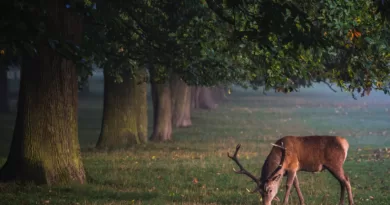Are Dianthus Deer Resistant
– Dianthus: A Brief Overview of the Plant’s Characteristics and Significance in Gardens
Dianthus, commonly known as carnations or pinks, is a popular choice for garden enthusiasts due to its striking appearance and unique characteristics. This flowering plant belongs to the Caryophyllaceae family and can be found in a wide range of colors, from deep reds to delicate pinks and whites. With its ruffled petals and subtle fragrance, Dianthus adds a touch of elegance and charm to any garden setting. Its compact growth habit and abundant blooms make it an excellent choice for borders, rock gardens, or container planting. Additionally, Dianthus is known to attract butterflies and bees, thereby contributing to the overall biodiversity of a garden.
Aside from its aesthetic appeal, Dianthus also holds significant cultural symbolism. Historically, carnations were used in religious ceremonies and rituals, symbolizing love, devotion, and purity. In different cultures, these flowers have been associated with various meanings, such as good luck, admiration, and distinction. Moreover, Dianthus has been valued for its medicinal properties, with some of its species used in herbal remedies for digestive issues and skin conditions. Overall, Dianthus offers both visual delight and historical significance, making it a cherished plant in gardens around the world.
– Identifying Deer-Resistant Plants: Factors That Determine a Plant’s Resistance to Deer
Plants that are resistant to deer can be a valuable addition to any garden. These resilient plants have certain characteristics that help deter deer from nibbling on them. One of the key factors that determine a plant’s resistance to deer is its taste profile. Deer generally avoid plants that have a bitter or strong taste. This is why plants with aromatic foliage, such as dianthus, are often less attractive to deer. These plants have a distinct flavor that deer find unappetizing, making them less likely to be targeted.
Another factor that contributes to a plant’s deer resistance is its texture. Deer prefer tender, succulent foliage, so plants with a tougher or woody texture are less likely to be eaten. This is why plants like dianthus, with their thin, wiry stems and small, tough leaves, are often more resistant to deer damage. The less palatable the texture of the plant, the less likely it is to be devoured by wandering deer. Considering these factors when selecting plants for your garden can help ensure a beautiful and flourishing landscape that is less likely to be ravaged by these hungry creatures.
– Examining the Physical Attributes of Dianthus: How They May Contribute to Deer Avoidance
Dianthus, also known as carnations or pinks, possesses certain physical attributes that may contribute to deer avoidance in gardens. One key characteristic is the presence of tough, leathery leaves. These leaves have a thick texture, making them less palatable to deer. The coarse texture and stiffness of the leaves deter deer from grazing on them, as they prefer softer and more tender foliage. Additionally, Dianthus plants often have a compact growth habit, with dense clusters of flowers and foliage. This dense growth pattern can create a formidable barrier for deer, as it becomes more difficult for them to reach the leaves and flowers. This physical structure acts as a deterrent, discouraging deer from accessing the plant and feeding on it.
– The Role of Scent in Deer-Plant Interactions: Investigating Dianthus’ Odor and Its Effect on Deer
As gardeners, we know all too well the struggles of keeping deer away from our beloved plants. One factor that plays a significant role in the deer-plant interactions is scent. This is particularly intriguing when it comes to dianthus, a beautiful flowering plant commonly found in gardens.
Dianthus emits a distinct and pleasant aroma that can be quite captivating to humans. However, when it comes to deer, the scent of dianthus may have a different effect. Many gardeners and experts believe that the strong fragrance of dianthus can actually deter deer from feeding on the plant. While further research is needed to understand the exact reason behind this, it is speculated that the scent overwhelms the olfactory senses of deer, making them less likely to approach the plant. By investigating the role of scent in deer-plant interactions, we can gain valuable insights into how dianthus may be used as an effective deterrent against deer damage in gardens.
– Taste Profiles of Dianthus: Assessing the Plant’s Flavor and Its Impact on Deer Feeding Behavior
Dianthus, commonly known as carnations or pinks, is a diverse genus of flowering plants that are widely cultivated in gardens. While its beauty and vibrant colors are valued by garden enthusiasts, there is another characteristic of Dianthus that is of interest – its taste. Researchers have conducted studies to assess the taste profiles of Dianthus and understand how they may impact deer feeding behavior.
One of the primary goals of these studies is to determine whether the taste of Dianthus is appealing or unappealing to deer. By analyzing the chemical composition of the plant, researchers can identify specific compounds that contribute to its flavor. This information can help gardeners and experts understand why some deer may be more inclined to eat Dianthus, while others may avoid it. Understanding the taste profiles of Dianthus is crucial in developing effective strategies to deter deer and protect these ornamental plants.
– Assessing the Deer Resistance of Dianthus: Observations from Gardeners and Experts
In the world of gardening, one of the key concerns for many gardeners is protecting their plants from deer. When it comes to assessing the deer resistance of Dianthus, the collective observations from both gardeners and experts can provide valuable insights.
Gardeners who have incorporated Dianthus into their landscapes have reported varying levels of success in deterring deer. Some gardeners claim that Dianthus is highly deer-resistant, while others have observed occasional grazing or damage. Experts suggest that there may be factors influencing this variability, such as geographic location, availability of alternative food sources, and the number of deer in the area. Additionally, the specific cultivar of Dianthus may also play a role in its deer resistance, as certain varieties may be more appealing to deer than others.
As more gardeners and experts contribute their observations, a clearer picture of the deer resistance of Dianthus will emerge. This shared knowledge can help gardeners make informed decisions about incorporating Dianthus into their landscapes and implementing effective strategies to protect their plants from deer. With a collective effort to document experiences, the understanding of Dianthus’ resistance to deer can continue to evolve and benefit gardeners seeking to establish a harmonious coexistence between their foliage and these graceful creatures.
– Strategies for Deterring Deer: Tips and Techniques to Protect Dianthus and Other Plants
One common strategy for deterring deer and protecting Dianthus and other plants is the use of physical barriers. Fencing is an effective method that can be used to create a physical barrier around the garden or specific areas where Dianthus is planted. The fence should be at least 7-8 feet tall to prevent deer from easily jumping over it. Additionally, the fence should be buried at least 6 inches into the ground to prevent deer from digging under it. Another option is to use deer netting or mesh to cover individual plants or sections of the garden. These barriers create a deterrent for deer and can help protect Dianthus from being eaten or damaged.
Another approach to deter deer is through the use of repellents. There are both commercial and homemade repellents available that can be applied to Dianthus and surrounding plants. These repellents are designed to emit odors that are unpleasant to deer, causing them to avoid the area. Common ingredients in commercial repellents include garlic, egg solids, and predator urine. Homemade repellents can be made using ingredients like hot pepper sauce, soap, and water. It is important to regularly reapply repellents, especially after rain, to ensure their effectiveness in deterring deer.
• Fencing is an effective method to create a physical barrier around the garden or specific areas where Dianthus is planted
• The fence should be at least 7-8 feet tall to prevent deer from easily jumping over it
• The fence should be buried at least 6 inches into the ground to prevent deer from digging under it
• Deer netting or mesh can be used to cover individual plants or sections of the garden as an alternative option
• Repellents can also be used to deter deer from eating or damaging Dianthus and surrounding plants
• Commercial repellents often contain ingredients like garlic, egg solids, and predator urine that emit odors unpleasant for deer
• Homemade repellents can be made using hot pepper sauce, soap, and water as ingredients
• Regular reapplication of repellents, especially after rain, is important for their effectiveness in deterring deer.
– Companion Planting: Exploring the Potential of Combining Dianthus with Deer-Repelling Plants
Planting a garden that is not only aesthetically pleasing but also resistant to deer can be a challenge. One potential solution is companion planting, which involves strategically placing certain plants together to deter unwanted pests. In the case of Dianthus, combining it with deer-repelling plants has the potential to create a protective barrier against these graceful yet voracious creatures.
When considering companion plants for Dianthus, it is important to choose species that have natural characteristics that repel deer. Plants with strong odors, prickly leaves, or bitter taste profiles are often less appealing to deer and can help keep them at bay. Some commonly recommended deer-repelling plants that can be paired with Dianthus include lavender, yarrow, sage, and catmint. By intermixing these plants in your garden, you can create a diverse and visually stunning landscape that is less attractive to deer. Additionally, planting fragrant herbs like rosemary or thyme alongside Dianthus can further enhance its deer-deterring properties.
– Other Factors Affecting Deer Resistance: Climate, Location, and Other Considerations for Dianthus
One important factor that can influence the deer resistance of Dianthus is the climate in which it grows. Dianthus plants can vary in their ability to tolerate different climate conditions, and this can impact their appeal or unattractiveness to deer. Certain varieties of Dianthus may be more resilient and resistant to deer grazing in colder climates, while others may thrive in hotter, drier regions. Understanding the specific climate requirements and limitations of different Dianthus varieties can help gardeners select plants that are more likely to deter deer.
In addition to climate, the location of Dianthus plants within a garden or landscape can also play a role in their deer resistance. For example, Dianthus plants that are positioned closer to areas with dense vegetation or cover, such as shrubs or tall grasses, may be less prone to deer grazing. Deer are more likely to avoid open and exposed spaces where they feel vulnerable, so strategically planting Dianthus in areas that offer some level of natural protection can help deter them. Furthermore, the proximity of Dianthus plants to other deer-attracting elements such as food sources or popular deer pathways can affect their resistance levels. By considering the location and surroundings of Dianthus plants, gardeners can make informed decisions to enhance their deer resistance.
Please note that these headings can be further expanded upon to create comprehensive sections for the blog topic “Are Dian
Dianthus, commonly known as carnations or pinks, are a popular choice for gardens due to their vibrant blooms and pleasant fragrance. These plants belong to the Caryophyllaceae family and are native to Europe and Asia. Dianthus can be categorized into three main groups: annuals, biennials, and perennials. They vary in size and color, with flower sizes ranging from small and delicate to large and showy. The leaves of dianthus plants are typically slender and grass-like, providing an attractive contrast to the colorful blooms. Overall, dianthus plants are highly valued for their visual appeal and are often used as ornamental border plants or in floral arrangements.
Deer resistance is a significant consideration for gardeners when selecting plants for their landscapes. Several factors contribute to a plant’s ability to resist deer damage, and dianthus has been found to exhibit varying levels of resistance. One notable attribute that can deter deer is the physical structure of the plant. Dianthus plants have wiry stems and fibrous leaves, which can make them less appealing to deer as they are not as succulent or nutritious as other plant varieties. Additionally, some dianthus species produce a milky sap that is unpalatable to deer, providing an extra layer of protection against browsing. However, it is important to note that while dianthus plants may possess some level of deer resistance, their effectiveness can depend on environmental factors, such as the population density of deer in the area and the availability of alternative food sources.
What are the characteristics of Dianthus plants?
Dianthus plants are known for their vibrant and fragrant flowers. They typically have narrow, lance-shaped leaves and grow in compact clumps or mats. They come in a variety of colors and are popular in gardens for their beauty.
Why are Dianthus plants significant in gardens?
Dianthus plants add color, fragrance, and texture to gardens. They are often used as ornamental plants due to their attractive flowers. Additionally, some Dianthus varieties are known for their resistance to deer, making them a valuable addition to gardens in areas where deer are a problem.
What factors determine a plant’s resistance to deer?
There are several factors that contribute to a plant’s resistance to deer. These include the plant’s taste, scent, physical attributes, and its ability to withstand browsing. Some plants, like Dianthus, have characteristics that make them less appealing to deer, making them more resistant.
How does Dianthus’ odor affect deer?
Dianthus plants produce a distinctive odor that can repel deer. The strong scent of these plants can make them less attractive to deer and deter them from feeding on them. However, the effectiveness of the scent may vary depending on the specific deer population and their preferences.
Can deer taste Dianthus?
While there may be variations in individual deer preferences, Dianthus is generally considered to have a taste that is unappealing to deer. The plant’s flavor can act as a deterrent, making it less likely for deer to consume Dianthus compared to other plants.
How do gardeners and experts assess the deer resistance of Dianthus?
Gardeners and experts observe the behavior of deer in the presence of Dianthus plants to assess their resistance. They look for signs of browsing, such as damage to leaves or flowers, as well as the overall health and condition of the plants. These observations help determine the level of deer resistance of Dianthus.
What are some strategies for deterring deer from Dianthus and other plants?
There are various methods to deter deer from feeding on Dianthus and other plants. These include installing fences, using deer repellents, planting deer-resistant species alongside Dianthus, and creating barriers with plants that deer dislike. Each strategy has its own pros and cons, and their effectiveness may vary depending on the specific circumstances.
Can Dianthus be combined with other deer-repelling plants?
Yes, Dianthus can be combined with other deer-repelling plants in a practice called companion planting. By strategically planting Dianthus alongside other plants that deer find unappealing, you can create a more effective barrier and enhance the overall deer resistance of your garden.
What other factors should be considered for Dianthus’ deer resistance?
Besides the plant’s characteristics, climate, location, and other factors should be considered when assessing Dianthus’ deer resistance. Different deer populations may exhibit varying preferences, and environmental conditions can also influence deer behavior. It is important to take these factors into account when evaluating the deer resistance of Dianthus plants.




